calsfoundation@cals.org
Salem (Fulton County)
County Seat
| Latitude and Longitude: | 36º22’28″N 091º49’35″W |
| Elevation: | 714 feet |
| Area: | 2.41 square miles (2020 Census) |
| Population: | 1,566 (2020 Census) |
| Incorporation Dates: | July 21, 1900, and November 15, 1927 |
Historical Population as per the U.S. Census:
|
1810 |
1820 |
1830 |
1840 |
1850 |
1860 |
1870 |
1880 |
1890 |
1900 |
|
– |
– |
– |
– |
– |
– |
– |
– |
– |
– |
|
1910 |
1920 |
1930 |
1940 |
1950 |
1960 |
1970 |
1980 |
1990 |
2000 |
|
– |
– |
481 |
574 |
687 |
713 |
1,277 |
1,424 |
1,474 |
1,591 |
|
2010 |
2020 | ||||||||
|
1,635 |
1,566 |
Salem, the seat of Fulton County, is located at the foot of Pilot Knob. The clear water of the South Fork of the Spring River runs through the northeastern boundaries of Salem and provides recreational opportunities, such as fishing and floating, as does the nearby Strawberry River. The hills and rivers provide scenic views for the many tourists who visit the Salem area each year.
Louisiana Purchase through Early Statehood
William P. Morris is credited with establishing the town of Salem when he came to the area in 1839. When he saw Pilot Knob, he decided to stake the land grant claim he received for serving in the War of 1812 near it.
Fulton County was organized in 1842 by the Arkansas General Assembly. What is now Salem was selected as the county seat on July 4, 1844. A one-room log house was erected on the public square for a seat of justice. The first post office was established in 1844 and named Pilot Hill. Prior to the Civil War, the one-room log courthouse was replaced with a larger structure containing a courtroom and clerk’s office.
Civil War through Reconstruction
The Action at Spring River (also known as the Battle of Salem) was on March 13, 1862. Lieutenant Colonel Samuel N. Wood (US) led his troops toward Salem, chasing away Rebel pickets and passing through a hastily abandoned camp on their way. The Union expedition collided with the combined Confederate force, which Wood estimated at 600 to 1,000 men, at a swampy area northeast of Salem. The Confederates were reinforced by approximately 250 men from Salem and advanced from the swamp. The Rebels were driven back into the swamp, and Wood retreated into Missouri.
The entire action lasted about four hours. Union casualties comprised four killed, eighteen wounded, and one missing. Confederate losses were unreported, but Wood estimated them at a minimum of 100.
The courthouse, along with all of Salem except one log cabin, was destroyed by fire said to be the work of a marauding party during the Civil War. In 1864, guerillas also captured a wagon train near Salem full of Union troops and families; eighty men and an unknown number of women were killed.
After the Civil War, another log courthouse was erected that stood until 1870, when it, with all of the records, was destroyed by another fire. The present-day courthouse was constructed soon after that fire. The town name was changed from Pilot Hill to Salem on February 20, 1872. The town was known as Salem long before that, but the name’s origin is unknown.
Post-Reconstruction through the Gilded Age
Jesse Matthews established the Informer, Salem’s first newspaper, in 1876, and the town has had a weekly newspaper ever since. James T. Hall established the Sentinel-Republican in 1898, which became the Salem Sun in about 1906. Hall published the paper for fifteen years.
There are no records of business owners in Salem prior to the Civil War. Some of the earliest known business owners were James M. Northcutt, James M. Archer, F. M. Daniels, Alex Cunningham, William Wainwright, B. H. and William Castleberry, and J. M. Pickren. Most of the merchandise came to river ports at Batesville (Independence County), Jacksonport (Jackson County), or Calico Rock (Izard County) from New Orleans. In the 1890s, there were three buildings on the north side of the square. The principal store on the east side was the W. M. Castleberry Furniture Store, Stoves and Hardware. The building was destroyed, cause unknown, and a rock building replaced it in the early 1900s; it still stands. There were also two hotels in Salem in the early 1900s. The Wainwright Hotel was the first brick structure in Salem and was located on the northwest corner of the square. Star Hotel was located on the south side of the square.
Early Twentieth Century
The City of Salem was incorporated on July 21, 1900. However, there was a period when the city did not have a governing body, and on November 15, 1927, Salem was reincorporated with an elected mayor and councilmen. The first telephone lines in Salem were established in 1890 and were strung from Salem to Mammoth Spring (Fulton County).
Dr. Z. L. Watters owned the first drugstore. Among the early doctors were Dr. J. L. Weathers, who began his practice in 1909, and Dr. O. S. Woods, who moved to Salem in 1917. Jewell B. Wood was hired as the first public health nurse in 1933. One of Wood’s duties was to visit the seventy-two schools in the county. Families could not afford healthcare, and the visit from the county nurse at the schools was the only professional care many children received.
Salem did not have electric lights until 1928. Ed and Wyatt Wolf owned the first power plant. The power was turned off at 11:00 each evening and restored at 6:00 the next morning. The Wolf brothers sold the power plant to Rural Electric Cooperative Association, which is now the North Arkansas Electric Cooperative, in 1942.
World War II through the Modern Era
World War II affected nearly every family in the Salem area, as young men left for the war. A devastating tornado hit Salem on January 29, 1947. The tornado made a northeasterly path through the residential section of the town, destroying several houses. The business section was not hit directly, and the school was also spared. There were no immediate deaths, though one person died later from injuries.
Dr. Carl Arnold came to Salem in 1959 and soon started working with city leaders to establish a hospital, recruiting Dr. David Ducker to join him. With the help of Congressman Wilbur D. Mills and county residents, who voted to pass a five-mill tax, they obtained a Hill Burton grant for rural hospitals. Arnold and Ducker purchased land near the South Fork River to build a clinic and donated acreage for the hospital. Fulton County Hospital opened in March 1963, the same year that Liberty Telephone and Communications (modern-day CenturyTel) brought rural telephone service to the area. The hospital has remained open since that time and is one of the last county-owned hospitals operating in Arkansas.
Salem’s population doubled from 1960 to 1980. The establishment of the Fulton County Hospital in 1963 and the Tri-County Shirt Factory in the mid-1960s provided jobs in the area, accounting for the increase in population.
The shirt factory closed in 2001, causing a major economic loss to the area. Small factories in Salem provide employment for some of the residents, but Salem continues to feel the economic impact of the loss.
Education
It is believed that the first subscription school was founded in Salem in about 1850. A new school building was erected in 1869. The first high school in the county, it was used until 1930, when consolidation of smaller districts with Salem High School necessitated more building space and led to the construction of a native stone building. In 1969, a new campus was built east of town. A new Salem Elementary School is adjacent to the high school campus.
For additional information:
Fulton County, Arkansas: History and Families. Morley, MO: Acclaim Press, 2008.
Hunt, Grace, Cunningham, Mrs. G. T., Benton, J. Orville, and Ray, Jo. “Salem, ‘The City of Peace.’” Fulton County Chronicles 1.1 (1982): 15–29.
Carolyn Lewis
Fulton County Heritage Foundation
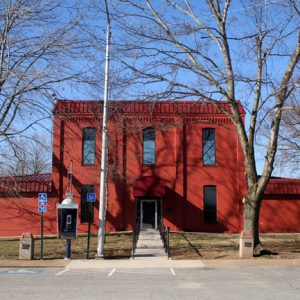
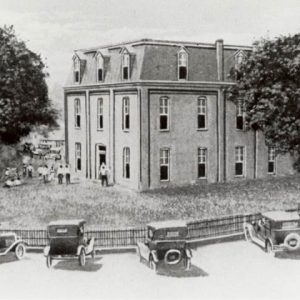
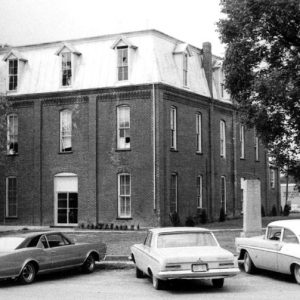
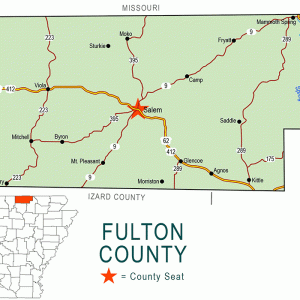
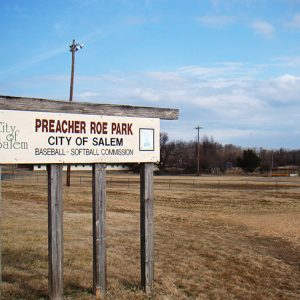
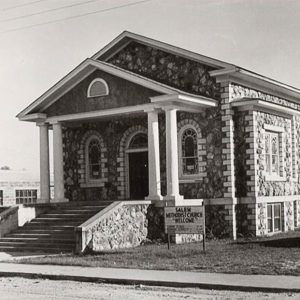
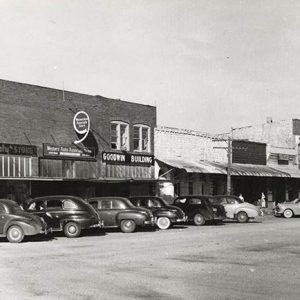
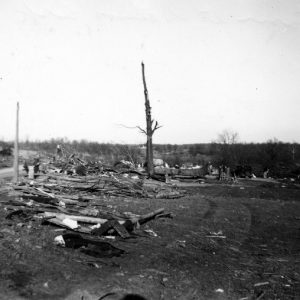
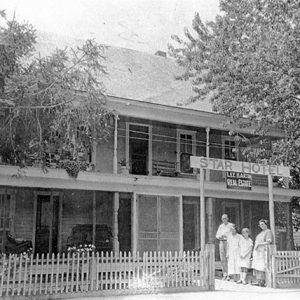
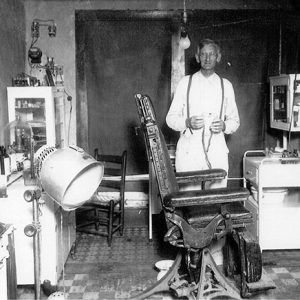




The first class to graduate out of the new school was 1971.